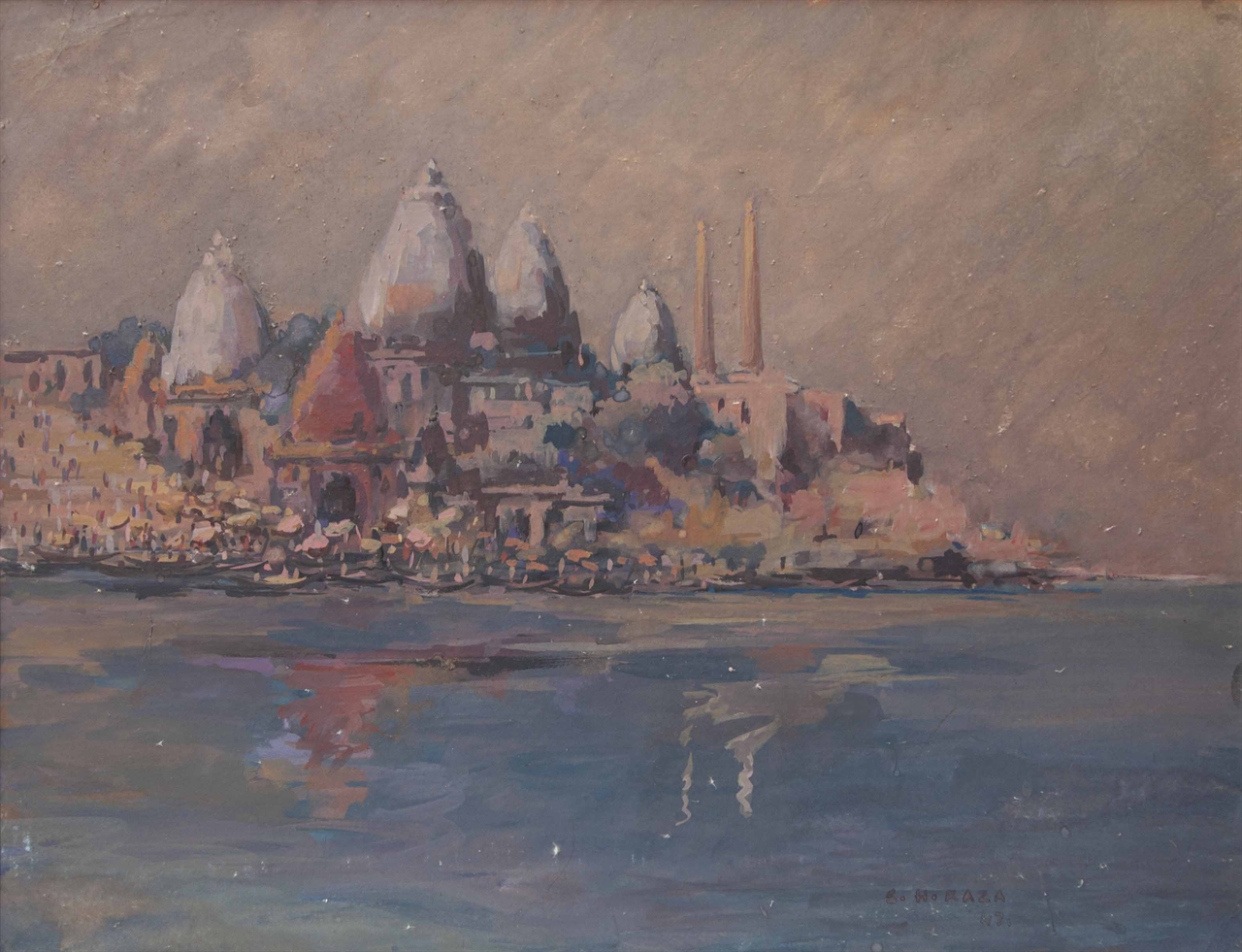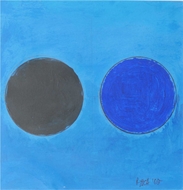![]() Significant Indian Art
Significant Indian Art
![]() Significant Indian Art
SYED HAIDER RAZA (1922 - 2016)
Significant Indian Art
SYED HAIDER RAZA (1922 - 2016)
RELATED LOTS
CONTACT US
Catalogue & Viewing
Lot Closed
Accounts & Shipping
Lot Closed
-
Details
 Details
Details
After graduating from the Sir JJ School of Art, the young Raza had embarked on an intense journey of creative research in the following years of his art practice. It was a time that witnessed an eclectic development of art forms in the creative field. He absorbed all of it - the Impressionists, Indian artists Amrita Sher-Gil, Jamini Roy, Abanindranath Tagore, Nandalal Bose and others.
Benaras, painted by Raza in 1947 is a culmination of all these influences. It was a significant period in his life – India had gained independence and he had concluded his education at Sir JJ School of Art. He travelled to Benaras, the seat of Indian spiritualism, and painted a series of images. This watercolour is one from those series that captured his ingenuity as he stood at the threshold of an illustrious career.
-
Literature
 Literature
Literature

Few front rank artists in modern India had to struggle their way up as Syed Haider Raza had to do, and yet he has carved out for himself a place in the field of landscape painting in which few could excel or even equal him.
Born in 1922, at Babaria, in the Central Provinces, with an innate aptitude for art, Raza had his early training in the Nagpur School of Art. He was soon attracted to Bombay, which offered him an almost unlimited field and he slowly worked his way up the ladder to fame in Western India. Though he got his art diploma from the J. J. School of Art only recently (1947), he enjoys a reputation out of all proportion that yardstick of merit.
He exhibited his paintings for the first time in Bombay in 1943 and since then he has had something to offer at every show. His one-man exhibition last year (1949) was a great success. He received several prizes including a silver medal from the Bombay Art Society in 1948 and a gold medal at the All-India Fine Arts Exhibition held at Nagpur the same year and yet another gold medal at the Calcutta Industrial Exhibition.
Raza justifies his preference for watercolour on the plea that it is cheaper and lends itself to easier outdoor painting. Reasons apart, he has translated his partiality for watercolour into some specimens truly representative of his reactions to the outside world. Depending more on colour as a vehicle of expression, he splashes on paper in a carefree manner and succeeds in producing the correct atmosphere, as well as the innermost feelings of the subjects he paints.
A romantic painter, he selects his subjects from nature but always tries to go beyond it and with an almost poetic penetration he transforms the grey vistas of Bori Bunder or Flora Fountain on a realism of the subjects. He has a habit of painting landscapes on the spot so as to ensure freshness and spontaneity.
- Manu Thacker & G. Venkatachalam, Present-Day Painters of India, p. 39, Bombay, 1950
-
Notes
 Notes
Notes

PUBLISHED: Purrshottam Bhaggeria and Pavan Malhotra, Elite Collectors of Modern & Contemporary Indian Art, New Delhi, 2008, p. 225




